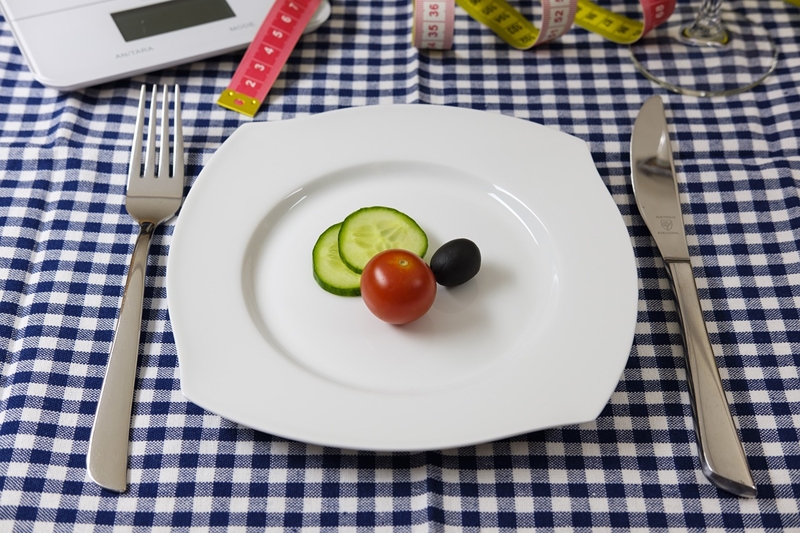
Browse the health section at your local bookstore, scroll through social media feeds of fitness professionals, glance at fitness magazines in the checkout aisle of the grocery store. It’s abundantly clear what modern health and fitness is about: losing fat, getting into a smaller clothing size, fixing flaws, and building “perfect” body parts. Physical endowments like a defined midsection and sculpted butt are highlighted, while tips to reduce cellulite and the newest fat-scorching workout are plastered on magazine covers and littered across social media.
You can finally love your body and be happy once you attain these goals, or so we’re led to believe. Happiness, it seems, is just a couple of smaller pant sizes or one perfectly sculpted body part away.
Look around much of the health and fitness world, and the underlying themes become abundantly clear. The effectiveness of a workout is determined by how exhausted you were at the end or how sore you felt the next day. And when it comes to food, you need to be on a rigid, restrictive diet, and you must follow it perfectly, without deviation.
Behind these messages is a fundamental principle that saturates the health and fitness industry: your priority, as a woman, is to build a leaner, more attractive body free from flaws, at any cost necessary. Once you achieve a goal, it’s time to move on to the next thing on your body that you can improve.
Is it any wonder so many women dislike not just their bodies, but themselves?
Health and fitness has been relegated to the lowest possible denominator: the superficial has replaced the substantive. “Health” and “fitness” nowadays really aren’t so much about health or fitness as they are about achieving superficial standards, at any cost necessary, and with a blatant disregard for other more important components of what truly defines health and fitness.
In other words, it’s not about how healthy or fit you are; it’s about how healthy and fit you look.
The superficial focus has ushered in obsessive eating habits, negative self-image, frustration, guilt, dissatisfaction, determining self-worth by numbers (e.g., the scale, pant size, etc.), and a surplus of costly gimmicks and worthless supplements.
And it’s nonsense.
Health and fitness is a multibillion-dollar industry—per year. It will incessantly poke your insecurities and gladly create new ones just to sell you a “solution.” Intelligent marketers know how impatient humans are, and they’re happy to play to our innate desire for instant gratification. They point out a “flaw” (You have unsightly cellulite!) that makes us self-conscious and present us with tantalizing products and programs that promise to deliver quick results (You can be more beautiful within a short time with our revolutionary product.). They know which buttons to push so we reach right over our common sense to whip out the credit card if we believe their solution just might work.
This brings up another problem with fad diets, fitness programs, and “hacks” that promise drastic results in a few short weeks. We’re told if we “go all in” and do the program or diet perfectly, we’ll achieve results that provide overwhelming happiness. Not only is “perfectly” following such a thing an extreme challenge, but we never stop and ask, “What will I do once this is over?”
Instead of yet another extreme, strict regimen, why not try something different? Something that truly works so you not only achieve great results, but you can maintain them without a tremendous amount of effort—and you can do it for the rest of your life.
I want to make sure that, come next year, you don’t find yourself saying, “I gained a bunch of weight. Help me get my body back.” I love training people, but I do not love helping people get their bodies “back” year in and year out. Rather, my goal is to help you develop a sustainable lifestyle so you can maintain the results you achieve into the next year, and the year after.
That’s only possible if you enjoy the process (at least most of the time) and it fits into your life (instead of dominating it).
If you hate the process or feel like your life must revolve around it, you know you won’t keep doing it.
Health and fitness should be about gaining strength that makes your life easier, less stressful, and more enjoyable. It’s about eating well, not just for the goal of looking better, but to nourish yourself so you can grow stronger and more resilient. It’s about building a body that serves you and allows you to live your life to the fullest.
It’s about creating a sustainable lifestyle. All the things you do for your health—strength training, eating well, harnessing an empowered mindset—become things you do because they’re part of who you are.
This article is an excerpt from Lift Like a Girl: Be More, Not Less. This book is for women who want a simple, no nonsense plan free from obsessive eating habits and exhausting workout programs. Get strong, get results, and get on with the rest of your life. Get your copy of the book here.
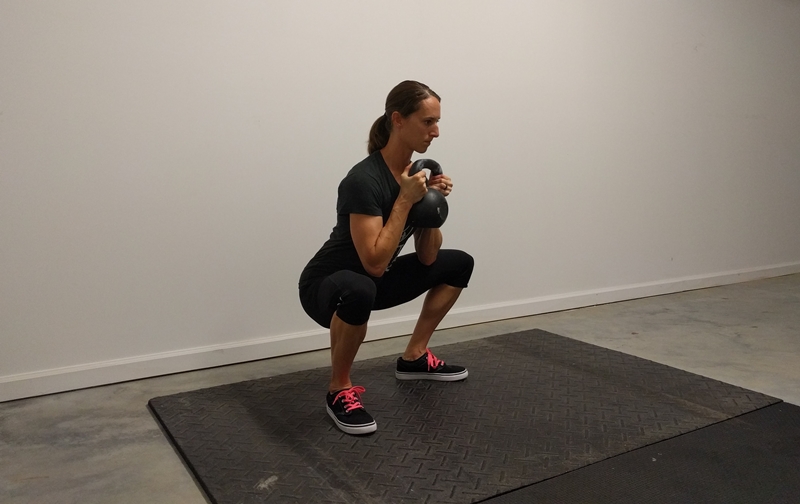
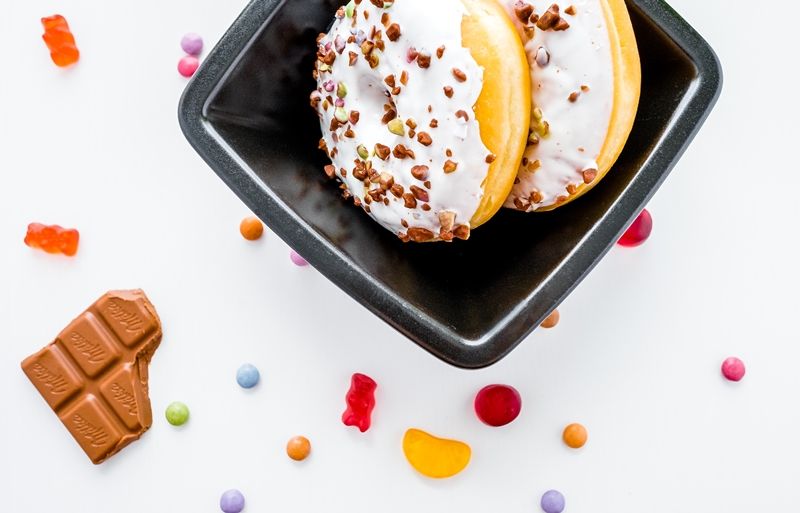
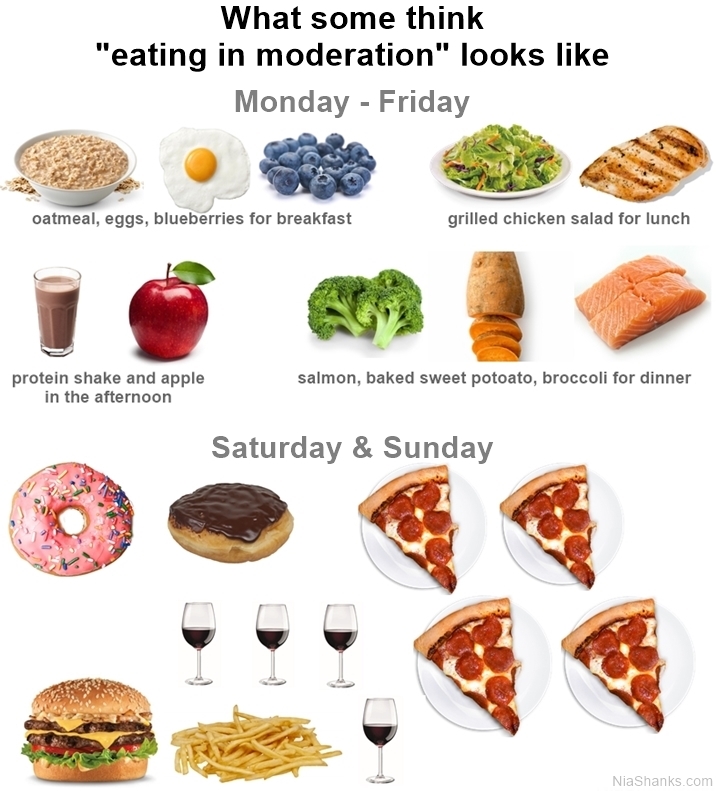 Being “good” during the week and eating the “bad” things over the weekend they successfully abstained from during the week is what some people consider eating in moderation. When you look at the quantity of not-super-healthy foods consumed on the weekend, it’s clear that they constitute a large amount of the weekly average food choices; not so moderate after all.
Being “good” during the week and eating the “bad” things over the weekend they successfully abstained from during the week is what some people consider eating in moderation. When you look at the quantity of not-super-healthy foods consumed on the weekend, it’s clear that they constitute a large amount of the weekly average food choices; not so moderate after all.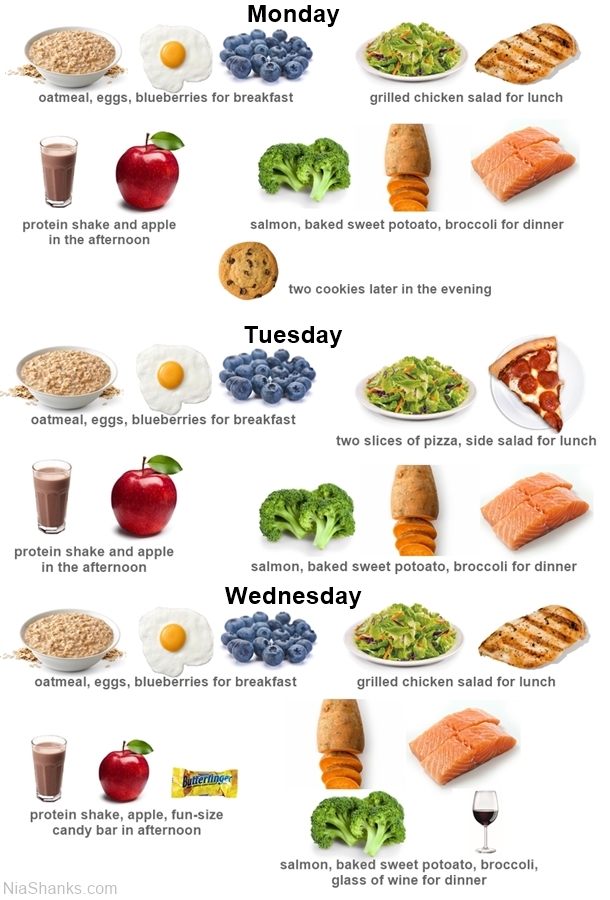 This is one possible example of how to work in reasonable quantities of treats/refined foods into daily eating choices to successfully practice eating in moderation. This isn’t the only option, however, as some people may prefer to have a larger meal less frequently.
This is one possible example of how to work in reasonable quantities of treats/refined foods into daily eating choices to successfully practice eating in moderation. This isn’t the only option, however, as some people may prefer to have a larger meal less frequently.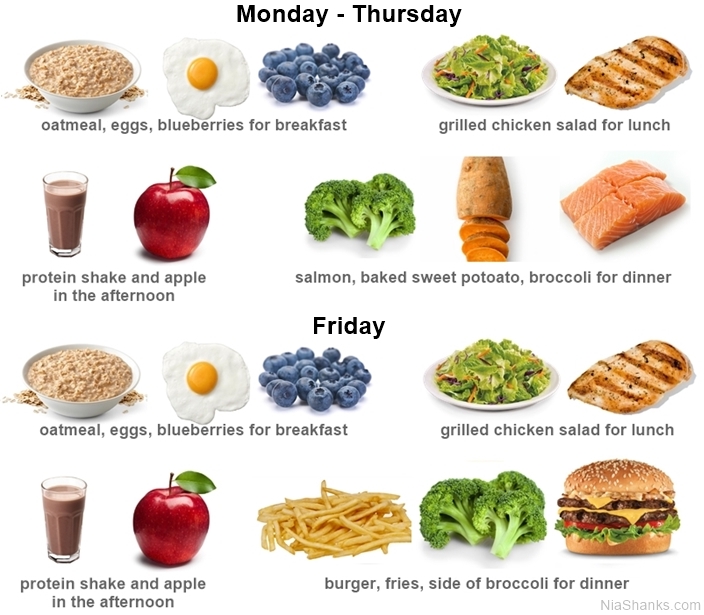 The above images are mere examples. I’m not suggesting you must eat the same foods every day or those foods specifically — the images are examples of whole-food meals that include a good source of protein. The number of daily meals and food choices should be tailored to your eating preferences.
The above images are mere examples. I’m not suggesting you must eat the same foods every day or those foods specifically — the images are examples of whole-food meals that include a good source of protein. The number of daily meals and food choices should be tailored to your eating preferences.